Strong earthquake swarm at underwater volcano near Mayotte
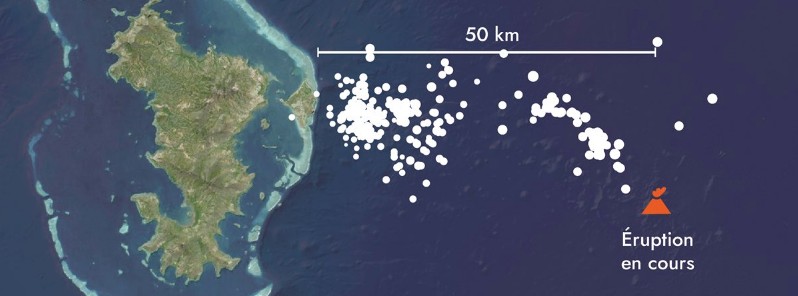
A strong long-period earthquake activity (LP) was registered at a newly-discovered underwater volcano near Mayotte starting at 16:33 UTC on July 31, 2021.
A total of 186 LP earthquakes were recorded in three separate swarms, each associated with a very long-period earthquake (VLP), the Mayotte Volcanological and Seismological Monitoring Network (REVOSIMA) reports.
LP and VLP earthquakes are seismic signals usually associated with resonances and fluid movements (magmatic or hydrothermal) in depth.
"Work is underway to try to better understand these signals," REVOSIMA said.
"Some of these LP earthquakes were located about 1 km [0.62 miles] east of Petite Terre in the most active proximal seismic swarm area, about 1 km deep, at the same place where LP earthquakes are usually located."
These earthquakes have low magnitudes and have not been felt by the population.
A new swarm started at 13:00 UTC on August 1.
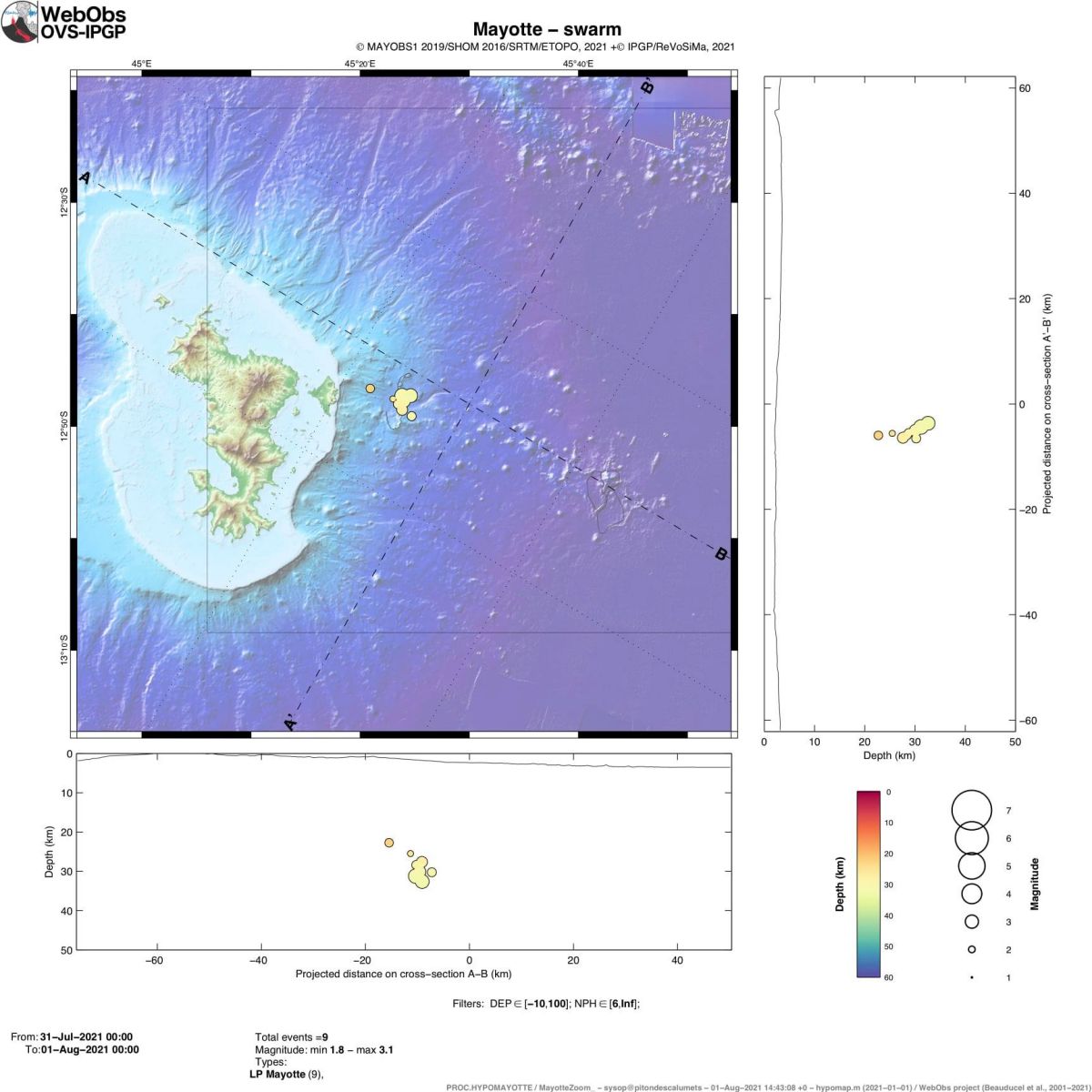
A weakly felt M4.1 earthquake was registered at 01:36 UTC on August 3, located about 35 km (21.7 miles) E of Dzaoudzi at a depth of 39 km (24.2 miles).
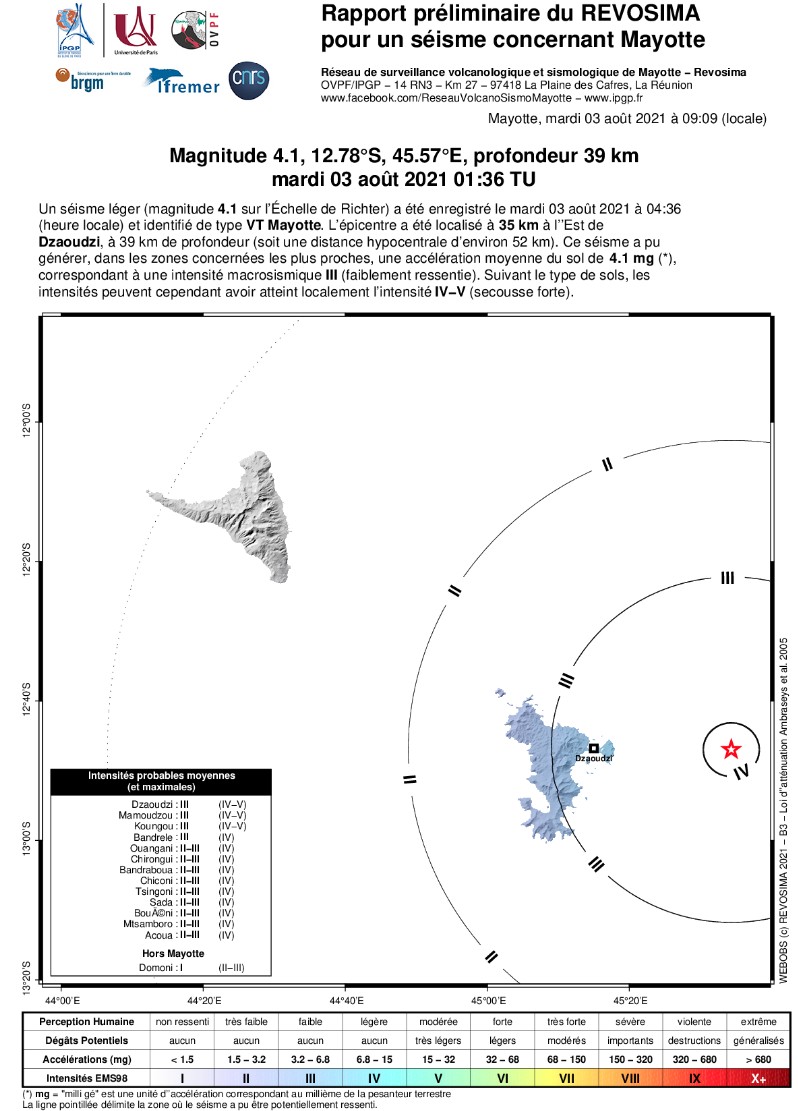
REVOSIMA recorded a total of 648 earthquakes during the month of July – 374 volcano-tectonic earthquakes (VT), 265 LP and 9 VLP earthquakes.
The main seismic activity was still concentrated 5 – 15 km (3.1 – 9.3 miles) east of Petite Terre, at depths of 20 – 50 km (12 – 31 miles).
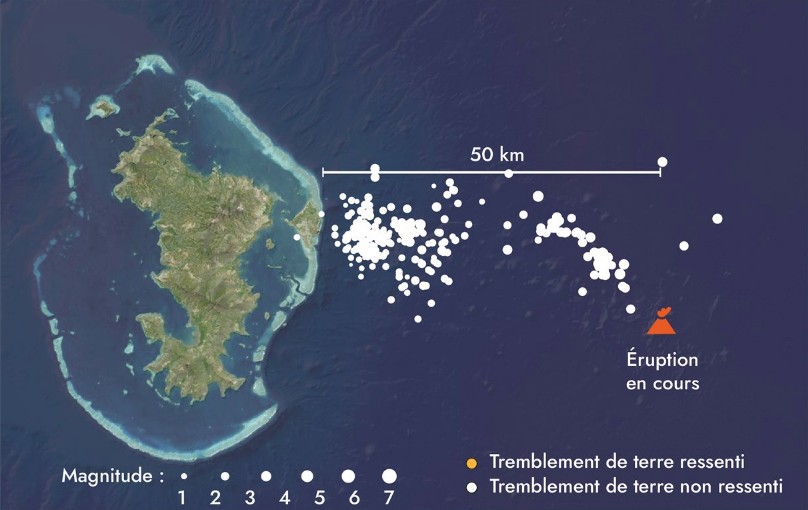
Image credit: REVOSIMA
Surface displacements measured since July 1, 2018 by GPS stations in Mayotte indicate an overall movement of Mayotte GPS stations of approximately 21 to 25 cm (8.2 – 9.8 inches) to the east; and subsidence of approximately 10 cm (3.9 inches) depending on their location on the island.
Since the end of 2020, deformations have become negligible.
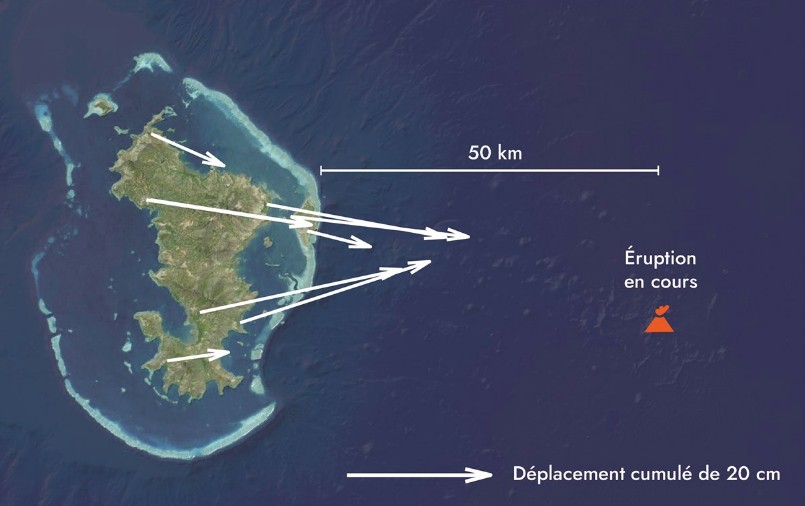
Image credit: REVOSIMA
Learn more: Mayotte volcano (archive)
Geological background
Mayotte Island in the Mozambique Channel between the northern tip of Madagascar and the eastern coast of Africa consists of two volcanoes with diverse geochemistry that were active from the Pliocene to the Holocene. Lavas on the NE were active from about 4.7 to 1.4 million years and on the south from about 7.7 to 2.7 million years.
Mafic activity resumed on the north from about 2.9 to 1.2 million years and on the south from about 2 to 1.5 million years. Morphologically youthful-looking maars are present on Mayotte Island, and Zinke et al. (2003) found several pumice layers of Holocene age in gravity cores on the barrier reef-lagoon complex at Mayotte. (GVP)
Featured image credit: REVOSIMA

Commenting rules and guidelines
We value the thoughts and opinions of our readers and welcome healthy discussions on our website. In order to maintain a respectful and positive community, we ask that all commenters follow these rules.